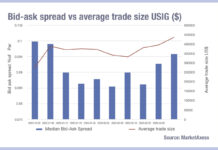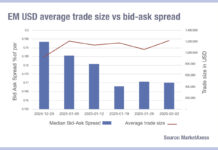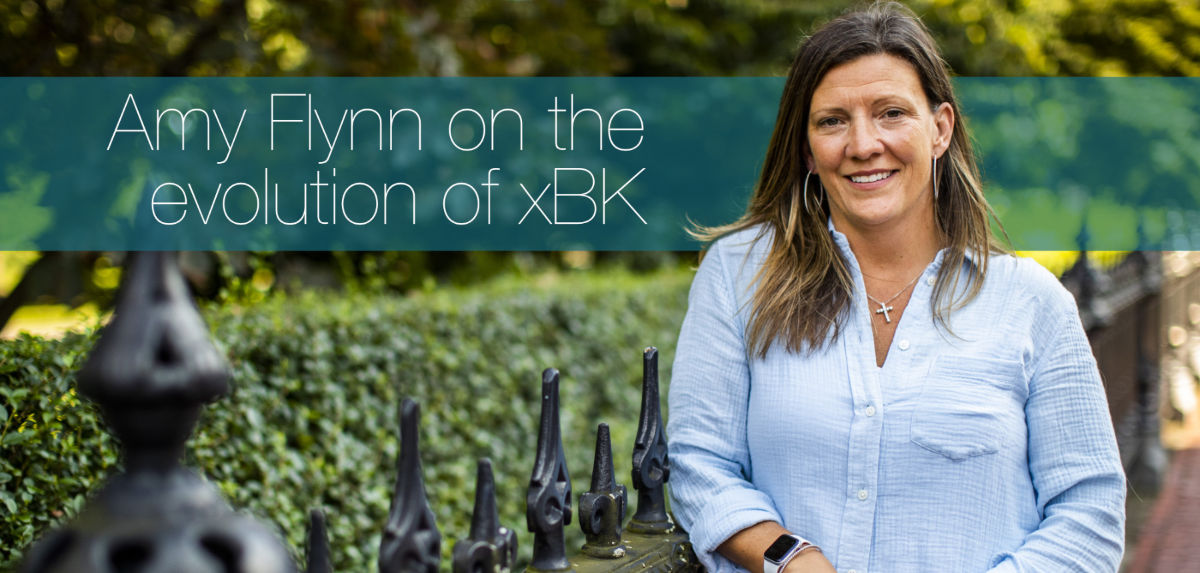
Amy Flynn is a managing director and the head of xBK, the buy-side fiduciary execution desk within BNY Mellon Execution Services. Amy has led the development of a standalone trading function to support internal and external clients.
How did xBK come about and what does it offer clients?
In 2017, BNY Mellon sought to merge specialist capabilities – active equity, active fixed income and municipal bonds (munis), as well as its Quantitative and Index team – into one asset manager. The necessary infrastructure to support these activities, as well as compliance, and legal services were being duplicated across the board. As the asset management capabilities merged, we also created one centralised trading desk, called xBK, as a standalone entity, to support Mellon Investments. We evaluated the three legacy infrastructures, the order and execution management system (O/EMS) combinations and decided to start afresh. That is because we would be able to operate on a more efficient and cheaper basis if we were not running three distinct technology stacks and such a large number of unique connections to the street and to execution platforms. We were lucky to have the ability to start with a blank canvas, so we simplified by centralising everything into a custom implementation of a global multi-asset EMS, Flextrade. That was a massive challenge but a successful and rewarding one. It has now given us the platform to build and to scale from and from which we are able to launch our outsourced trading and transition management services.
The outsourced trading and transition management services will work closely with the Asset Servicing and Markets teams to develop front, middle and back office solutions for BNY Mellon’s clients.
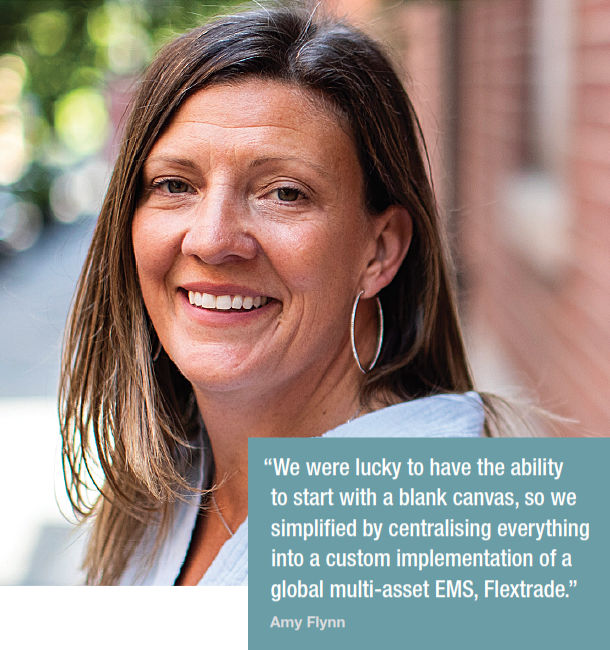 Is working in a larger entity more challenging?
Is working in a larger entity more challenging?
BNY Mellon is such a big entity with so much expertise, working closely with the markets team really allowed us to expand our network and interact more broadly across the bank, and understand how many unique services we offer our clients. We are one part of a holistic front, middle and back office solution and it is a massive team working to ensure that we are connecting the dots between each of those services. There is real passion and excitement for providing outsourced trading and it demonstrates how BNY Mellon has taken action and listened to the needs of our clients. This fiduciary outsourced trading solution will supplement the broad array of execution services that are already provided by BNY Mellon.
Which instruments and markets does xBK trade?
Our existing clients are focused in active equity, active fixed income, multi-asset, asset allocation, alongside index and exchange-traded funds (ETFs). To put that another way, we are trading fixed income, equities, derivatives, futures and FX on a global multi-asset basis. We have traders in San Francisco, Boston, Pittsburgh and Hong Kong. That global footprint is strategic both for local market access and for global business continuity.
What are your priorities over the next 18 months?
We continue to trade on behalf of Mellon Investments, which continues to expand as experts in the index, cash and exchange traded fund (ETF) space. As assets move throughout investment management to more sector-specific boutiques, we hope to continue to expand our remit and support investment management more broadly.
The next chapter is converting our trading desk and trade advisory service, to an outsourced trading and transition manager for external clients. The work that we did to overhaul trading across the legacy boutiques is a good test case for how to tackle this type of complexity as we look to externalise our buy-side trading offering to the broader client base of BNY Mellon. Trade execution will now complement the existing service offering from asset servicing in the middle and back office, adding execution capabilities to provide clients with a comprehensive end-to-end offering. That is in addition to other execution services that already exist at the bank, but the focus will be on buy-side fiduciary trading which is really the gold standard within asset management.
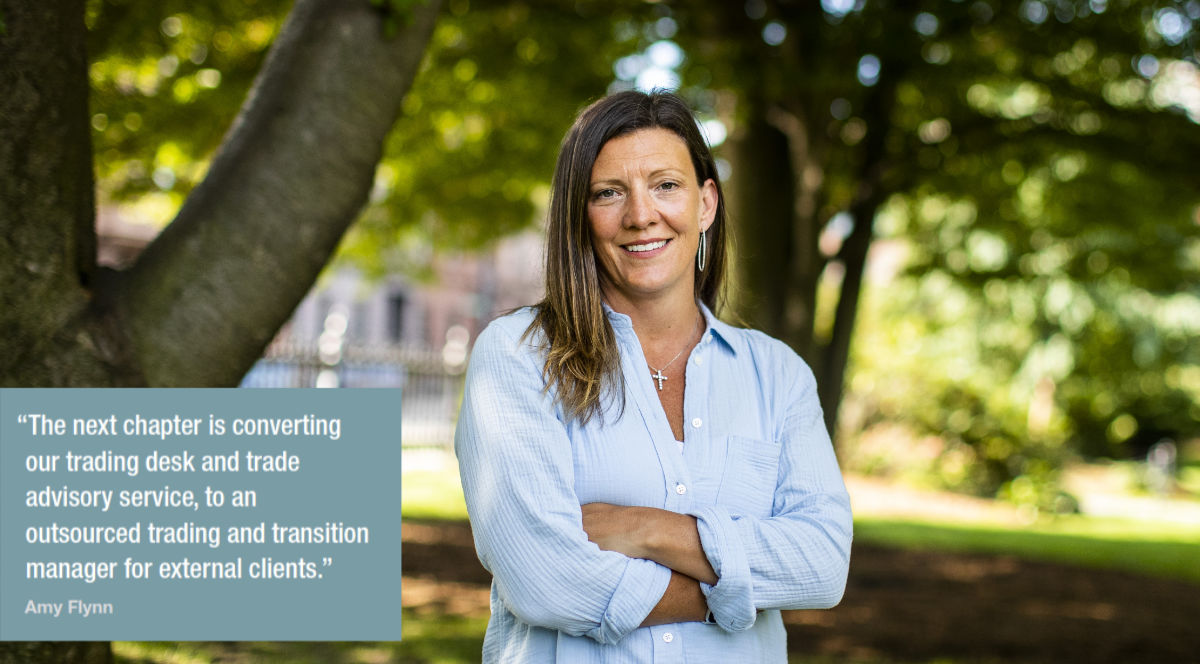
Which skills will your team need to handle this?
We ran a gap analysis for skill sets in our existing team to evolve from more qualitatively focused capabilities to a more quantitatively focused unit.
We have been able to supplement our existing traders with new staff that have more of a quantitative or data science background. That is helping us become more efficient and it is helping the teams work together to evolve our workflows toward increased automation. We don’t feel we have to be so specific on trading skill sets in particular, it’s really more about the mind-set, the ability to learn and evolve, and creating a positive team experience. We have traders that are great at execution, but their roles have evolved beyond pure execution and their time is in constant demand to help us with workflow changes and solving other complex problems. In pairing together a quant and a business analyst with the trader, they are figuring out the best way to tackle a particular problem. We can eliminate many bespoke manual processes and really look to the future in terms of achieving more automation and standardisation.
Does the need for new skills impact development of existing skills that are needed?
It’s definitely a fine balance because we need both in order to succeed. We are lucky that BNY Mellon has been investing in us and working closely with the Markets Execution team has provided us with extensive trading expertise and resources. I think that has given us at xBK a unique opportunity over the last couple of years that you just have not been seeing in trading of late. Across the industry, everybody is being asked to do more with less and I know that all firms are feeling that pressure. BNY Mellon’s commitment to outsourced trading and transition management has provided us with the opportunity to bring in new and diverse talent in order to bolster to our existing team.
What role is technology playing here, in terms of both legacy systems and new capabilities?
Technology debt really builds up over time, so being able to have the shiny new tools in the front end without having the entire tech stack limiting itself to accommodate some older legacy system is truly invaluable. We are doing that right now: we are moving forward in a more standardised process and selecting best-in-class current tech solutions, while retiring legacy systems and simplifying our infrastructure. It has been really helpful and necessary for us to do that, and although it has been hard, it has been a worthwhile exercise to go through.
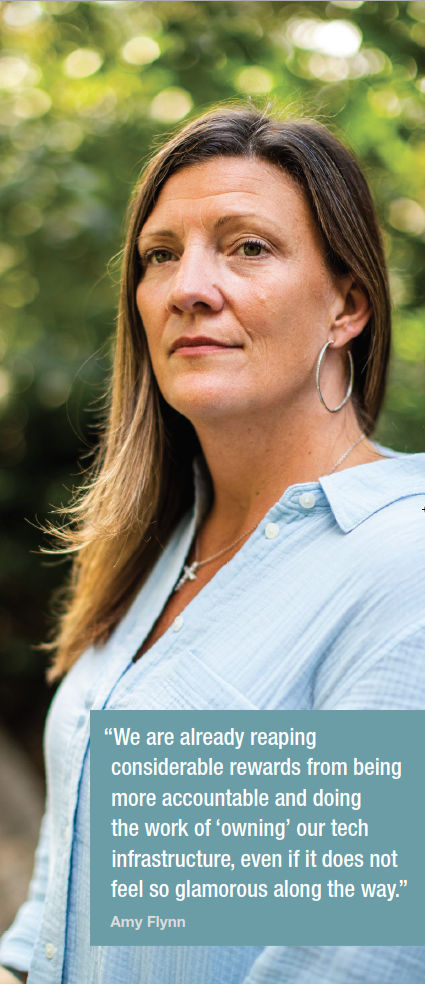 What are the biggest challenges you have in your current role?
What are the biggest challenges you have in your current role?
There is so much that we want to do around outsourced trading but these are complex projects that touch many lines of business. To achieve this, we continue to develop and enhance our technology and data capabilities, which requires strong governance and project management. While we have ambitious plans, we are also trying to balance being reasonable in what we ask of our teams and support staff, so they can enjoy the journey along the way as we make progress in refining xBK.
Technology debt is something that we talk a lot about. Retiring legacy systems is harder than bringing in new technology, but if we really want to be modern and flexible, we have to do the work to unstitch older tech and seamlessly weave in new tech in order gain all benefits from it, like live pricing and streaming quotes. We are already reaping considerable rewards from being more accountable and doing the work of ‘owning’ our tech infrastructure, even if it does not feel so glamorous along the way.
Which tools do you find useful given the scope of trading you are managing?
We are in the midst of completing our centralisation on to Flextrade as our EMS right now. We have extracted all fixed income trades onto that system which is helping us to come together as one centralised function. Historically, most asset classes traded out of an EMS that specialised in that asset class, and other trades were traded out of their portfolio management OMS, meaning there was different data and technology used depending on asset class. Using one EMS across all asset classes has been a game changer for us, in allowing us to really move forward as a team and streamline our connectivity both with brokers, and with the number of unique connections we need to our downstream platforms. Instead of having each desk independently connect and have those fixed lines and a team responsible for that infrastructure, it has all centralised into one more modern and streamlined location.
Our standardised workflows by asset class have allowed us to automate workflows and narrow the number of unique decisions that a trader makes when preparing an execution strategy. Orders will go through a set of logic filters that narrows the choices to make, and defines parameters to help us either execute through an algo or direct with the broker. Narrowing down the best outcome of a particular trade is a unique aspect that our data science and quant team are able to supplement. We are excited to continue to automate more of those decision points for traders, resulting in more alpha capture by clients.
How are you seeing the sell side support you?
The sell side has been a voice of reason for us as we have been going through this evolution. They see so much from their seats and know all of the clients and their technology choices and configurations. They are investing significant time and money into trade automation and the trade life cycle evolution, so we have been able to use them as a strategic sounding board. We want to be a good partner and we listen to our traders because they are directly responsible for our day-to-day sell-side relationships. The expertise of our traders allows them to drive broker selection that is guard- railed through our own policies and procedures. We get to decide what type of counterparty we want to be and how we can make these relationships be mutually beneficial.
A strategic partner on the sell-side is one that we would work with on connectivity – not everybody can stream into an EMS, and not everybody supports every available platform. Walking through our roadmap with our broker- dealers, getting their feedback, and then pushing them in the areas that we really need their connectivity puts us in lock step with the sell side in this evolution, while allowing us to retain our own identity. It’s a true partnership and one we take very seriously.
Which other systems and services do you have on the desks?
In terms of trading platforms, we use the main ones, like Bloomberg, Tradeweb and MarketAxess. We have also rolled out our own internal transaction cost analysis (TCA). That is one area that could benefit from more standardisation. Many TCA providers are specific to a particular asset class, or they incorrectly apply methodologies from one asset class that are not really relevant to another, which creates a lot of noise in the finished product. We have client providers that use this third-party TCA data as one-stop shopping across all asset classes, which can be difficult as there can often be little transparency around the source of the data, whether it is custodial data, real quotes, or live trades.
What effect does that have?
Well, for example, we might find that a TCA provider is using a volume-weighted average price (VWAP) methodology that extends over the course of a trading day on a security that was instructed to be traded at the open. We spend a lot of time explaining these nuances to clients and explaining why what works for equities may not be relevant in emerging markets fixed income, for example. I can understand the appeal of a single centralised TCA services, but I do not think that exists in a way that is really insightful just yet.
What opportunities are created by enhancing data?
The data has always been there but trading desks were lacking the proper skill sets to evaluate it and utilise it. The differentiating factor here is deriving meaningful conclusions that actually changes what you are doing – and ultimately, your trading strategy. There is a ton of data, but saving the parts that are actually informative and that can be used to come to a conclusion is hard. Our trade advisory team has been able to digest and analyse the data, and use those insights to write trading research white papers that have been particularly impactful for our clients.
How do you see communications and communication tools evolving now?
Covid has really forced us to rely on different means of communication in order to stay united as a team. Previously, line of sight between traders and PM’s was thought of as the most effective way to trade and communicate. Now we know that’s not true. We have centralised our communications by using tools like Symphony, where we have our own chat rooms and that is how our global traders stay connected. That allows more transparent and consistent communication around how to pass colour across our different desks. While our portfolio managers each have their own unique style, by standardising the inputs that are coming to us in the way that they instruct trades, we are less reliant on one-off emails and phone calls. We have also been really proactive in establishing proper order reason codes, which helps us, have more standard inputs and less reliance on other communication means to discuss the expectations of the trade.
Calls, chats, Bloomberg IB all still exist but we want to make sure we are servicing portfolio managers in the proper way, and are still able to pass along market colour and unique insights. We are trying to automate more of those functions so they are less bespoke, and we are getting fewer changes to orders as they pass compliance and because it is really hard to analyse our execution success post-trade because critical information came through a side conversation that was not logged properly on the trade.
Biography:
Amy Flynn is a managing director and the head of xBK, the buy-side fiduciary execution desk within BNY Mellon Execution Services. In this role, she oversees the Trading and Trade Advisory team and the service offering for the firm’s internal asset management clients. Flynn is responsible for all execution oversight, policies, procedures, and reporting on behalf of xBK’s trading desks located in Boston, San Francisco, Pittsburgh and Hong Kong. She also works closely with the broader Markets and Execution Services team to externalise the firm’s buy-side offering to clients in transition management and outsourced trading. Prior to joining Execution Services, Flynn spent 17 years within BNY Mellon Asset Management at both Standish and later Mellon Investments. She came to Standish in 2004 and has served as a bond trader, global head of trading and the chief administrative officer throughout her tenure. She began her career at Columbia Management Group as an investment grade and high yield trader prior to joining BNY Mellon. Flynn has a BA from the College of Holy Cross. She holds the CFA designation and is a member of the CFA Institute and the CFA Society Boston.
Amy Flynn, was photographed in the Boston Public Gardens, Boston, Massachusetts by Adam Glanzman for The DESK.
©Markets Media Europe 2021
TOP OF PAGE


